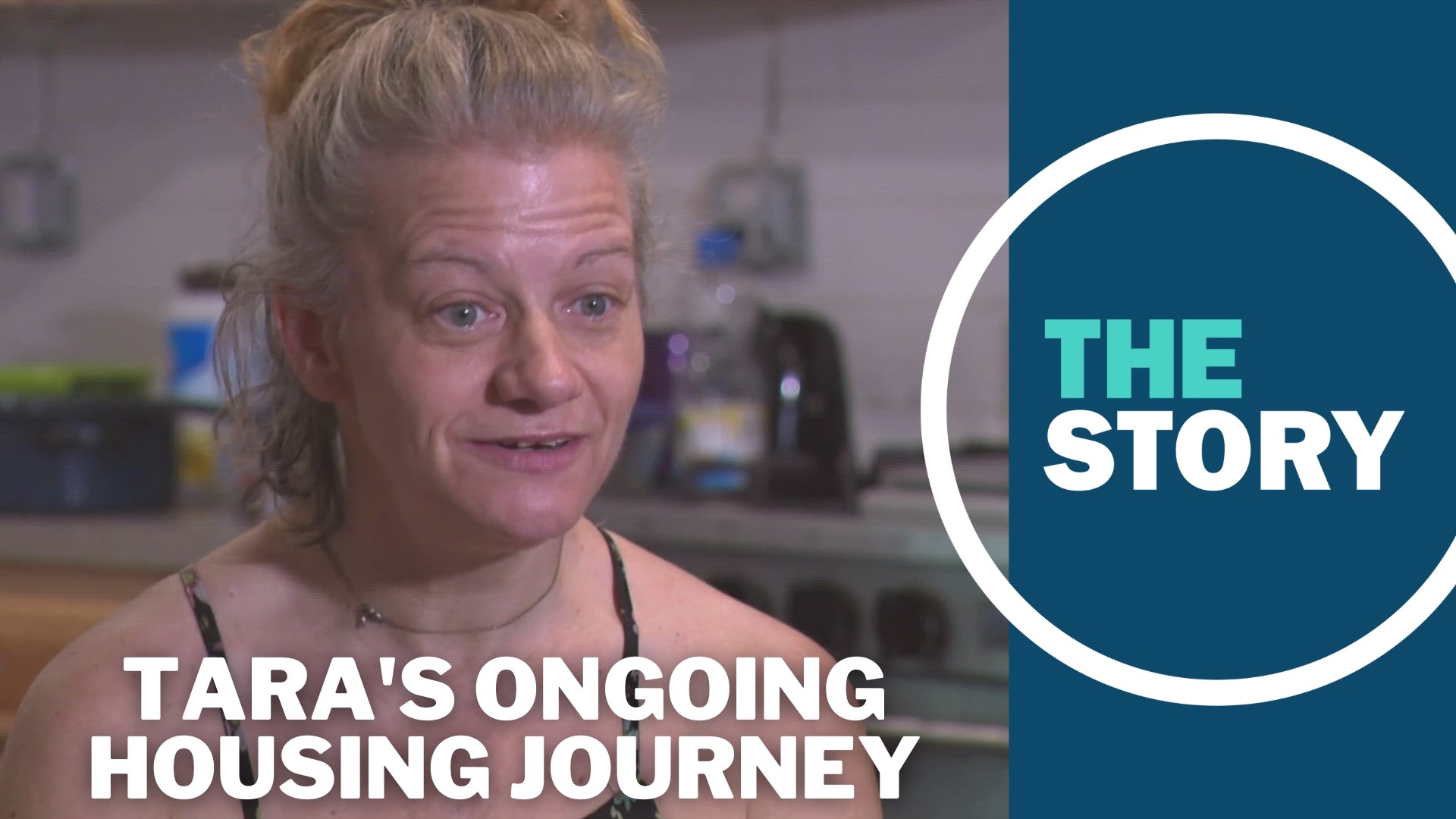PORTLAND, Ore. — The transition that Tara Pietromonaco has gone through over the last few months is life-changing, to say the least. For the first time in years, she’s living indoors.
“When I hear noises now outside, I am not worried, you know, or wondering who's out there or anything like that,” Pietromonaco said, sitting at a large kitchen table inside her Southeast Portland apartment building.
Just seven months ago, those anxieties were second-nature to her while she lived in a trailer on the west side of Northeast 33rd Drive.
“Now I look at it, it's like, 'Thank God I’m not there anymore,'" she said. "I just don't know if I would have been able to live much longer out there. I was getting to the point where I was at my breaking point. I was really on that breaking edge, ready to just fall off of it.”
But she didn't fall off — she was caught just in time. KGW reporter Blair Best met Pietromonaco last year while reporting on the homeless camps that line Northeast 33rd Drive. Pietromonaco said she'd just been bumped to the bottom of a Section 8 waitlist after waiting three years to get to the top.


A few months later, after keeping in contact with Pietromonaco, Best was able to connect her with an outreach team from JOIN. They moved her into an apartment building made for homeless people.
“I'm grateful. I'm grateful because I probably wouldn't be here right now,” Pietromonaco said.
When KGW first met Pietromonaco about a year ago, she collected just about everything she found and was good at keeping herself busy. She holds onto those habits, and now fills her 10x10 studio apartment with tools and unfinished projects.
“I’ve got this here, that's going to go over to this wall, and I have a dresser that's down in here,” Pietromonaco said, showing off her room. She packs her room in an attempt at finding security.
“The only downfall about being here, being indoors is I’ve lost my vehicles and I lost a lot of my things that were important to me, that cost a lot of money when I was out there,” Pietromonaco said.
She earned a reputation as a mechanic on the streets and would fill her time working on cars.
Even now, she often goes back to the camp on Northeast 33rd to check on her brother who still lives there.
“I worry about him,” she said through tears. “I do worry about him because he doesn't belong out there either.”
This is something Gurney Kimberley — who works with Pietromonaco and is JOIN’s program coordinator — said is common.
“Tara was, I think, a really active member in her community down there and I think she was valued,” he said.
Like many homeless nonprofits, JOIN is severely understaffed.
“This is not the kind of job you clock in and clock out of. This job you take home with you, and you go to sleep with it, and you wake up with it,” Kimberley added.
Pietromonaco’s case worker has at least 60 other clients just like her.
“People are coming off the streets with a lot of trauma, a lot of addiction issues, and a lot of severe mental health ... and if we're not realistic about that and willing to put the time and money into — and I mean serious time, not just a year, not just six months, but actual time, up to three to five years — into working with somebody then we're out of touch with reality,” Kimberley said.
And it isn't just the workers at nonprofits like JOIN that have to put in the hours. Getting back on her feet will take a lot of work from Pietromonaco, too, and others like her.
“I don't even know where to begin on that, you know ... it's a big step,” she said.

